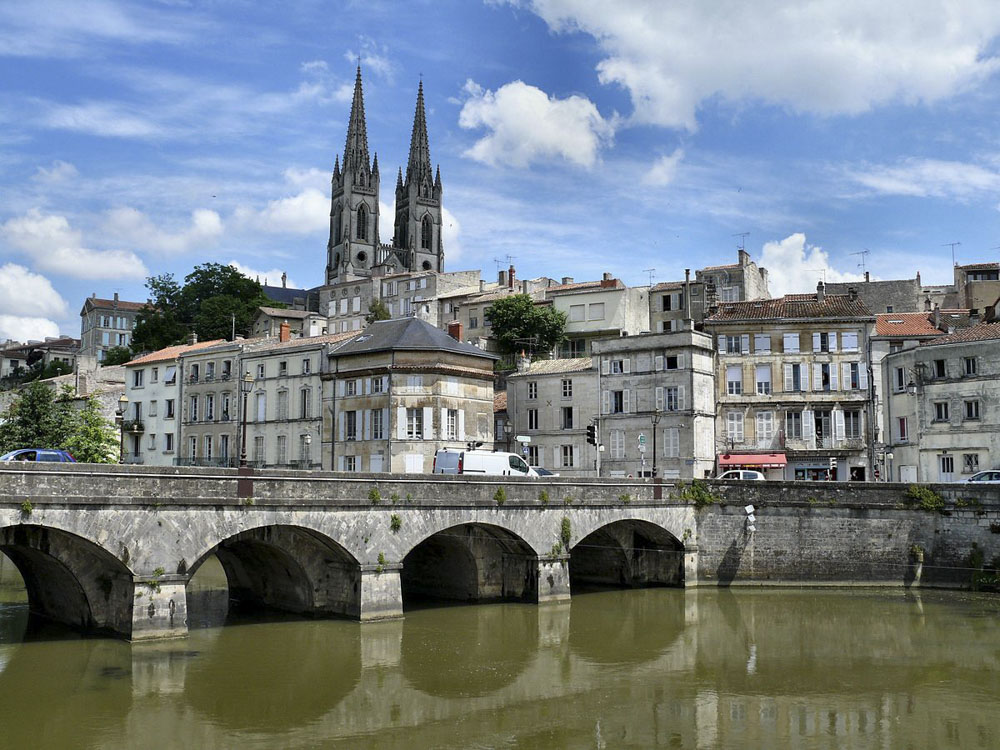Niort is a large town situated on the Sèvre Niortaise river about half way between Poitiers and La Rochelle in the Poitou-Charentes region of western France.
Exploring Niort
Niort has an interesting historical centre, with houses dating from the medieval and renaissance eras and also several monuments of interest to discover, as well as a substantial amount of more recent development – it is an important centre for local business and finance in this region of France.
The old and new parts of central Niort are separated by the large Place de la Breche. It is the historical centre that is of interest to visitors. Start your visit perhaps with a stroll across the bridge in the centre of Niort, which gives nice views across the town and the church as well as the donjon.
The Donjon, on the river banks in Niort, is a major part of a medieval castle and the most important monument in Niort that dominates the town centre. In part the donjon dates from the 12th century, when it was built in the roman style by Henry II (Henry Plantagenet) and Richard the Lionheart, and is one of the largest castles from this period that remains in France.
The building includes two adjacent donjons separated by a logis: the two donjons are similar in design but one is a few metres taller than the other, both have round towers in each corner. The views across Niort from the donjon terraces are a highlight of a visit, and there is also a Museum of Ethnology and Archaeology to visit in the building.
On an island in the river just across from the donjon you can see Fort Foucault, the tower of which is the remains of a 12th century castle.
The Pilori is an interesting renaissance style building dating from the 14th century that was once the town hall for Niort. The building takes its name from the pillory that previously stood here. The whole building, in particular around the doors and windows, features decorative stonework. The pilori is now used as an exhibition centre for local artists.






